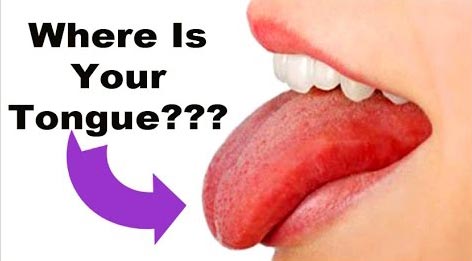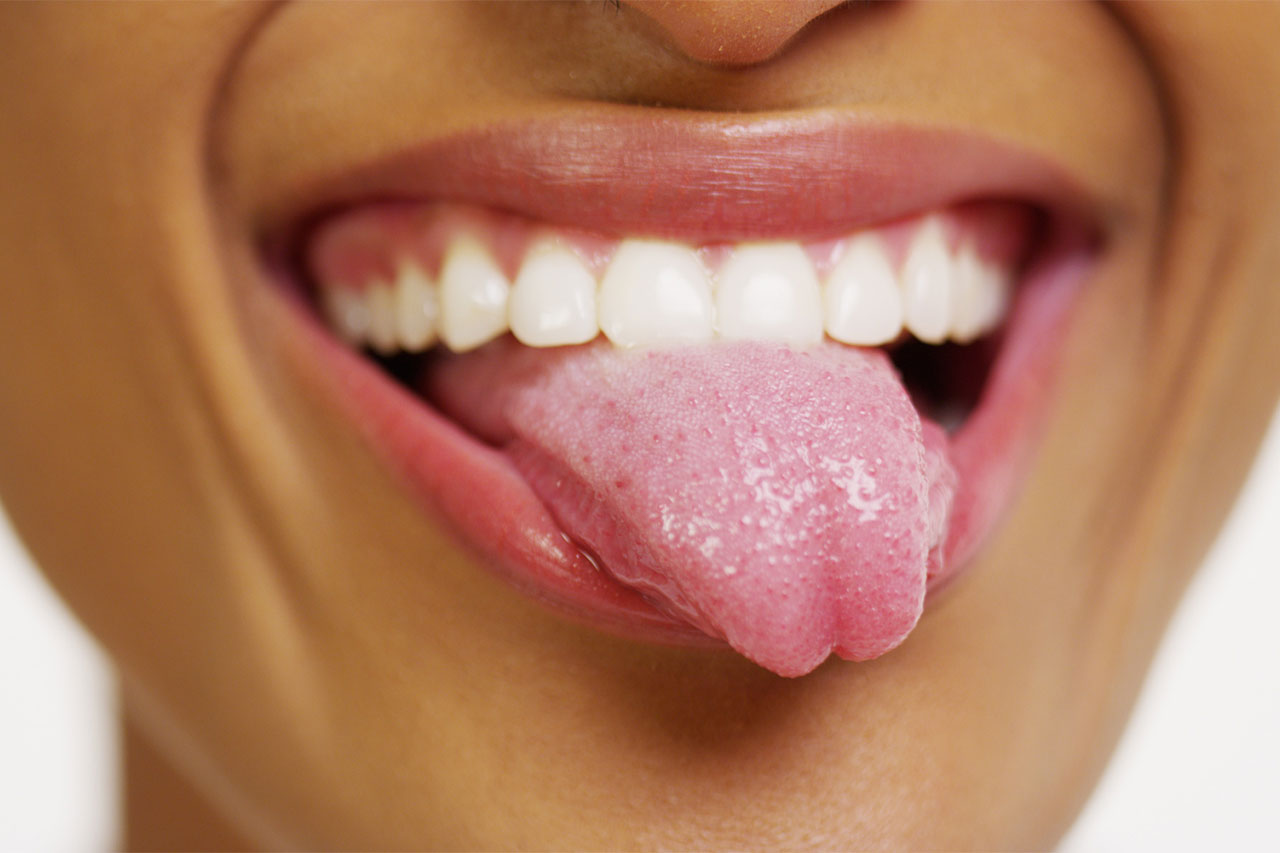For most of my adult life, I never imagined that the position of my tongue in my mouth mattered, not even a bit. And I’d certainly never heard of a tongue thrust! Then I learned the hard way, experiencing first hand just how powerful the tongue can be.
About a decade ago, I had some work done on my upper front tooth. It wasn’t quite a root canal, but my endodontist thought that he had come up with a tricky way to save the tooth by effectively cleaning out the problem from the inside, while leaving the root intact. The procedure was successful, which made us both very happy, but as the tooth and gum slowly healed, my tongue seemed to develop a mind of its own, moving to steadily and consistently push against the tooth.
It didn’t take long before my tongue was exerting relentless pressure on it, and once it was there, it stayed there. Of course, I paid minimal attention, who would?
 But then my tooth began to move – it felt like weeks, but it was more like months before I noticed that the small gap between my front teeth was a much bigger gap, and the tooth was now jutting out by what seemed like an incredible amount! I’d developed a tongue thrust.
But then my tooth began to move – it felt like weeks, but it was more like months before I noticed that the small gap between my front teeth was a much bigger gap, and the tooth was now jutting out by what seemed like an incredible amount! I’d developed a tongue thrust.
I tried to break the crazy habit my tongue had picked up, but like most bad habits, it had become practically set in stone, and it stayed that way for years. This explains why I have so much sympathy for Sarah’s patients who struggle to break their own habits, but that’s another article entirely.
When I met Sarah a few years ago, I’d already had an implant to replace the aforementioned tooth after the area that had been worked on eventually degenerated. There was no way my tongue was going to move a titanium post embedded in my jaw. In addition, I’d started wearing a bite-guard at night to stop me grinding my teeth, which stopped my tongue pressing where it shouldn’t. So I assumed that I would have no more woes. Silly me! Little did I know that my mouth was a mess.
Sarah pointed out where my tongue should be resting, and why. As she puts it:
“When someone has a tongue thrust, the tip of the tongue rests against or between the front teeth, and the entire tongue is positioned low in the mouth. Ideally, the tongue should rest in the top of the mouth and provide an internal support system for the upper jaw.
It is important to recognize that a tongue thrust is a symptom. It can be an indicator of other health concerns involving the airway and breathing. When a tongue thrust swallowing pattern is present, it’s almost inevitable that mouth breathing and an open mouth resting posture will also be found”.
Which is when I realized that I might just have a problem, because instead of resting fully on the top of my mouth with the very tip of the tongue on what she calls “the spot”, it was lying on the floor of my mouth like a dirty old rug. And it pushed forward whenever I swallowed. This wasn’t good news.
So as it turned out, I had bad habits that needed correcting. I’d never been able to correct the previous tongue thrust but a few simple exercises and some diligent focus on them started getting my tongue to pay attention. The tip moved to the spot and then the rest of it started moving to the right place, which was a great feeling.
Which brings us to the point of this article. Trying to get my tongue to move to the right position by myself was an effort in futility because I didn’t understand what I needed to do. When you’re dealing with entrenched habits and muscle weakness, you need the expertise of a trained therapist. This is true when you’re trying to recover from a sports injury and you see a physical therapist, and it’s just as true when you’re trying to correct your tongue position, which is when you need to see a myofunctional therapist.
And you need to see the process as a treatment program, that needs your awareness and active participation. Ten minutes a day of the right exercises will work wonders but hours of messing around by yourself will do nothing.
You could hope that things come right – that your tongue behaves itself or that your expensive orthodontic treatment doesn’t relapse, but believe me and my tongue when we tell you that there’s a hard way and there’s an easy way. Myofunctional therapy is the easy way.
Click here to read more about the tongue and tongue thrust habits, or click here to get in touch with Sarah.




